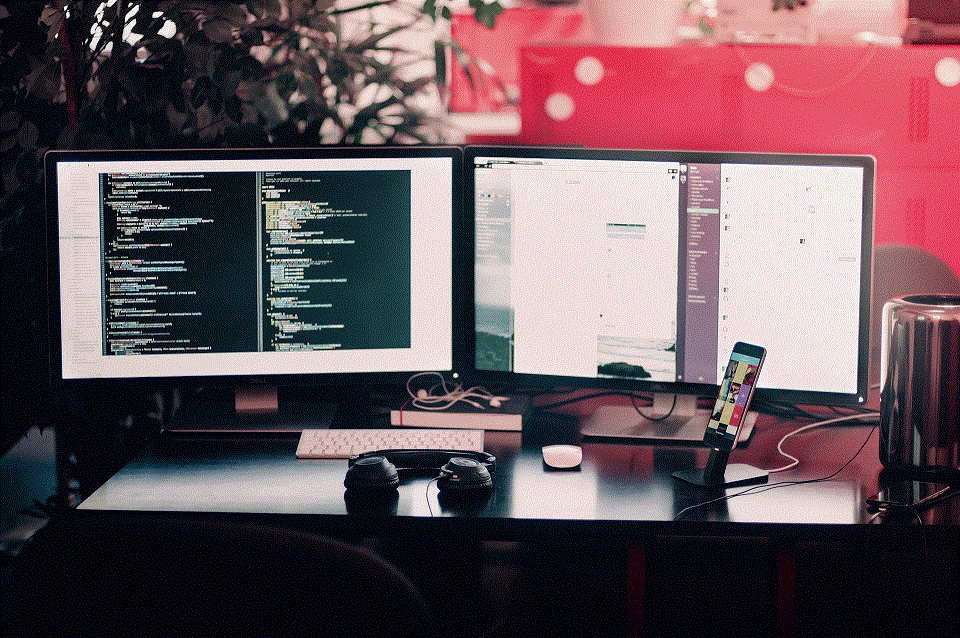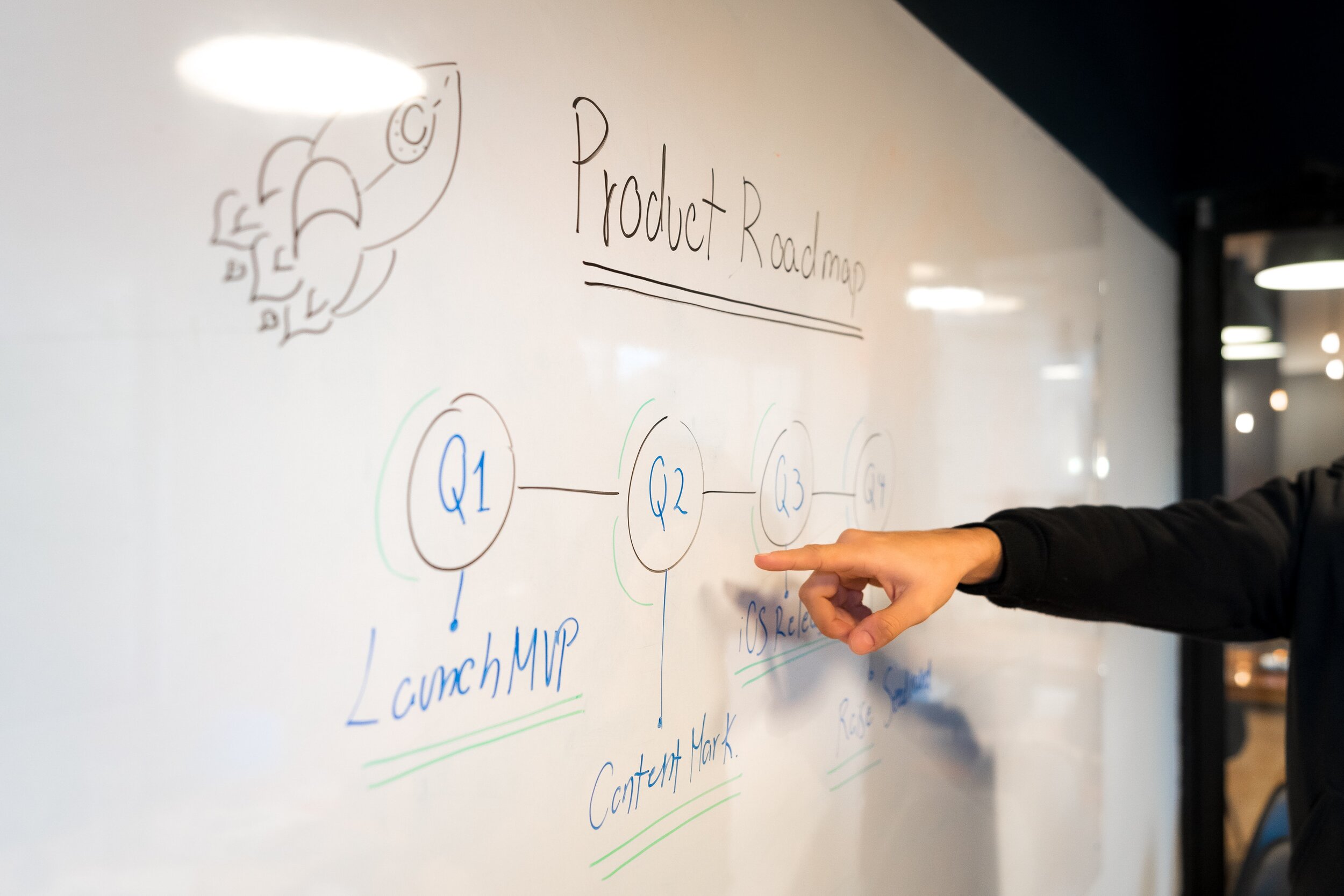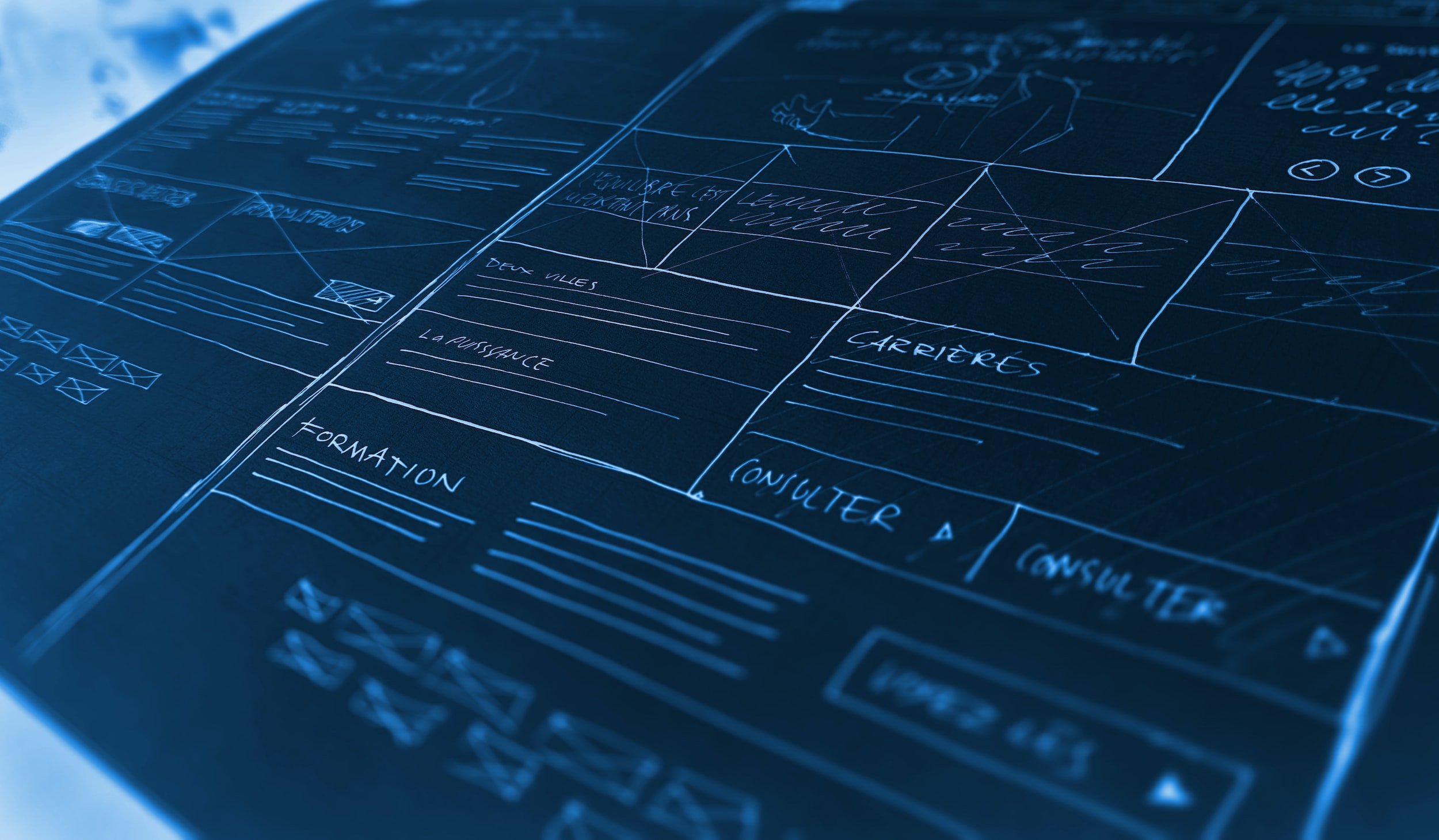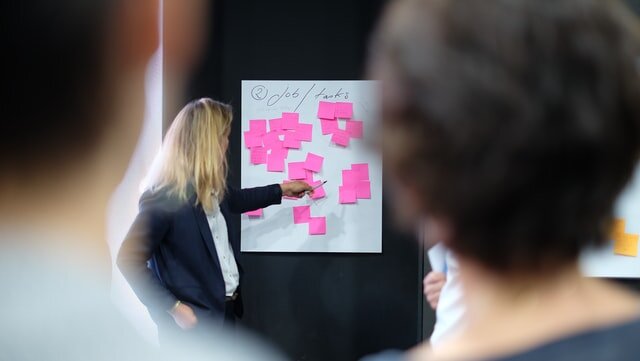Home Office or Corporate Office? The Future of Work
Image by Free-Photos from Pixabay
There seems to be a great alternative: Work from Anywhere
The world is changing dramatically— the pandemic and the subsequent lock-down enforced the rapid adoption of digital technologies bringing a direct impact on core aspects of work and life: education, learning, communicating, shopping, and, most importantly, working. The lockdown enforced new ways for people to provide services to companies (and to each other) — and most of these changes, are here to stay.
Until recently, working together in the same building for a fixed nine-to-five schedule has been simply the accepted norm — due to a number of reasons including convenience, easier monitoring and management of employees, and the lack of effective, mature collaboration technologies. Moreover, certain corporate cultures and managerial attitudes questioned the efficiency of ‘working from home’ — most of the companies wouldn’t encourage their employees to systematically work remotely. But this is now changing.
The Debate: Home Office or Corporate Office?
Following the pandemic and the subsequent lock-down, the corporate-office paradigm seems to be already obsolete, and this is good news — at least, long-term: working remotely at scale signals a shift to a better, balanced model, where work is measured and assessed more by deliverables and impact and less in terms of presence and standardized office-space behavioral patterns.
However, not everybody welcomes this change. Working remotely is great for some, but problematic for others. People may find it good for a while or occasionally but not for long or systematically. Professionals who appreciate focus time versus meetings and open-space collaboration, tend to perceive this change as a massive improvement. There is an ongoing debate on the best approach (on-premise vs remote) with valid arguments for both sides.
The main argument against the ‘remote work model’ is the limited interpersonal connection.
People rightly point out the limitations of the remote model when it comes to ‘human connection’ and specifically the difficulty to build and maintain professional relationships or to interact at a more personal level. On top of that, the typical home office is rarely ideal — in terms of setup, equipment, and ergonomics.
On the other hand, remote workers save significant commute time, which, in theory, can be used for personal activities and thus improve people’s work-life balance. There are employees who also praise the ‘remote work model’ for allowing them to better focus on complex tasks: they avoid the noise and ‘randomization’ of the open-plan office space and communicate effectively with colleagues, in less random patterns, via digital means. Furthermore, remote workers, have new opportunities to improve their well-being and their quality of life: normally they can manage their time more efficiently, while a new appealing option is now emerging:
Assuming that work location is not a constraint, relocating away from busy, noisy and expensive mega-cities becomes a valid and appealing option.
This is a complex topic with no easy, universal solution. The next ‘normal’ will not come by ‘intelligent design’. Instead, it will evolve, as businesses and professionals embrace the change, adapt to the new conditions, and adopt the new technological capabilities. The lockdown period forced companies, the workforce, and the society to try the work-from-home, or better, the work-from-anywhere model. This ‘experiment’ is in progress - people, employers, and families are all assessing the benefits, the limitations, and the new possibilities of this new paradigm; we are all redefining the next model of work and collaboration.
My personal view is that the situation will not return to the ‘old normal’. I envision the not-so-distant future of collaboration as a fluid, self-organizing system of professionals and business entities, where location and time schedules are not relevant anymore. Even the actual relationship between companies and employees will eventually evolve into new forms.
Knowledge Workers can Work from Anywhere
Modern office collaboration — especially the work done by ‘Knowledge Workers’ — can be decomposed into a small set of activities, for example, decision-making, visualization, design, coding, planning, etc. Typically, team members consume content, process information, and meet to discuss ideas and make decisions; they analyze data and convert it to strategy; they define digital products and experiences and build digital artifacts.
Face-to-face collaboration usually takes the form of whiteboard activity and unstructured discussions.
No physical co-working is needed for any of the above: all these activities can be performed remotely, with standard online collaboration tools and services. Modern digital tools offer a great team whiteboard experience or even digital ‘sticky notes’ to support ‘innovation exercises’ and collaborate in real-time. Assuming the right setup is there — not only technology but also a good team culture and communication practices — the actual work can be done at least as effectively as with the ‘on-premise model’. In fact, the cost of producing the same amount of teamwork could be significantly lower when done remotely. And this applies not only to knowledge but to any type of work characterized by increased digitization.
However, the online collaboration pattern introduces an important gap: the human connection. When colleagues enter a (physical) meeting room, they not only collaborate on solving a problem, making a decision, or producing some content; they also develop their business relationships, they build trust and they establish stronger connections at the human level. Although these may happen, to a certain extend, via a video call or other digital experiences, face-to-face interactions make it easier for people to be empathetic and network naturally — not only according to their business roles and skills but also based on personal stories, interests and other aspects of their personality.
Online collaboration tools truly empower teams to communicate, decide, and produce content faster. But it comes with limitations regarding cultural and team aspects. A hybrid approach introduces ways to bridge this gap, as described in the following.
Check also: our unique Innovation Toolkit - a collection of seven innovation templates that empower teams to frame problems, shape ideas, run hackathons, and more.
Working Remotely without a loss of ‘Human Connection’
Soon, companies will allow (or even encourage) a significant percentage of their employees to work remotely. In fact, progressive corporations will incentivize people to work from home. To get a sense of what’s coming, just check the announcements of Twitter and other tech companies[*].
Beyond the benefits of fewer buildings to operate, lower operating expenses per employee, and (hopefully) more satisfied workers, this model expands the classic notion of a market (and a country) and allows companies to recruit talent literally from anywhere on the planet: the true globalization is happening now. The question is, how will companies face the ‘personal connection deficit’ at the team and corporate level? The short answer is that they will optimize remote work but also orchestrate regular face-to-face business meetings and events.
Companies of the future will gradually abandon the paradigm of monolithic office buildings and the archaic nine-to-five model in favor of a fluid, flexible workforce, working literally from anywhere and across time-zones.
By taking advantage of the impressive capabilities of current digital tools and collaboration platforms, companies will not need to maintain expensive office space for their entire workforce. Probably, they will downsize and repurpose office space as described in the following.
The classic corporate office building hosting thousands of employees will be transformed into a network of small offices, a group of corporate ‘base stations’ or ‘hubs’ — offering basic services and collaboration facilities to employees, on-demand. This network will have increased geographical coverage but only limited total capacity — it will only be capable of hosting concurrently only a fraction of the total number of employees of the company.
On the one hand, the ‘office hubs’ will host those teams that need to be collocated (for example, functions like logistics, manufacturing, etc.); on the other hand, they will host random, on-demand requests from remote workers.
This new version of corporate office space will be multi-purpose, with adjustable collaboration spaces, to support team events, and those types of meetings that benefit from the physical presence of teams (for example, a brainstorming event, a live innovation contest, or a demonstration involving a live audience). The majority of this office space will have a ‘hot desk’ arrangement to cover the just-in-time needs of employees or partners. In this setup, desks are not assigned to particular employees — they are usable by any member of the company. The future office space will be capable of reflecting the utilization and the availability of hot desks through the online collaboration platform.
This way, employees who might be seeking physical space (desks, meeting rooms, equipment, or devices) will be able to explore real-time or predicted availability in a nearby corporate building and book the desired facilities with a click of a button. In this mode, employees are empowered to self-organize and utilize the corporate space on demand, for instance, to host a physical or hybrid meeting whenever they want: A team of remote collaborators that feels the need to meet face-to-face for a long brainstorming, may simply book the space in the nearest ‘hub office’ (in no time, through their digital collaboration environment) and host their meeting there — with latest tools, services and all the special facilities required. Similarly, entire teams could host their all-hands events, in a ‘physical mode’, at a predefined or a randomly selected corporate space from the network of ‘base stations’.
A ‘Team Digital Assistant’ , part of the online collaboration platform of the future, will be orchestrating regular physical meetings and related face-to-face business activities, based on the needs, the history, and the preferences of the team.
Meetups, Conferences, and Team Building will Make a Comeback
The obvious reaction during the lockdown was to take large-scale conferences online. When the pandemic is over and human interaction becomes normal, physical conferences and meetups will come back stronger: remote workers will attend such events to meet face-to-face and re-enforce their business bonds. Long projects which are meant to be worked by distributed teams, could be kicked-off with physical, mini-conference events; and delivered the same way. Major team events, such as retrospectives, could be done physically in one of the ‘corporate base stations’ or in a neutral space.
Similarly, team-building events will soon get a new meaning and they will become more frequent, relevant, and useful — to balance the missing ‘human connection’. The typical ‘business trip’ of the past (people traveling to work together) will be repurposed: members of distributed teams will be traveling primarily to physically meet the team, connect and improve how they work together, online.
There will be an increased need for special events that bring remote teams physically together - tailor-made business experiences aiming to empower the ‘one team’ mentality.
From the Corporate Campus to On-Demand, Co-Working Space
A new form of co-working space will eventually emerge. For companies with plenty of remote workers, it will not make sense to maintain huge, expensive corporate office space. Instead of maintaining expensive corporate buildings, companies will look for smart, flexible, on-demand solutions.
In the future, any company will be able to book an entire floor or even a building for short periods of time — from hours to days — just to host specific, face-to-face activities. The location may vary — the company may be selecting spots to serve different subsets of remote employees.
The short-term, large-scale co-working space booking will come with business services, including branding and special technologies to facilitate events and workshops. For instance, imagine a company booking a space to host a major corporate hackathon — bringing online employees together, in the same space, for a few days. In this scenario, the business services may also include technology equipment to help the teams build their prototypes, a stage for presenting the projects, or even professional video services to capture the outcomes of the event. Similarly, a company would be able to book a space to host a physical brainstorming for an important project or problem to solve.
Companies of the future will support their workforce, simply by using the best co-working spaces and collaboration facilities, on-demand — without the fixed cost of maintaining a fancy corporate space for all.
The Augmented Home Office
Working collaboratively is now more efficient than ever. Technology for remote collaboration has already made huge steps — services such as Microsoft Teams and Slack offer impressive tools and capabilities. And this will only get better, at an accelerated pace: As connectivity improves — in terms of speed and reliability — working remotely becomes more reliable, smooth, and ‘natural’.
Of course, a functional Home Office requires the right equipment, technology, and services. For example, additional monitors, higher quality headphones, or natural sound from special speakers and microphones can significantly improve the experience and make communication more interactive and productive. For instance, there may be a dedicated screen for video calls, presenting in full screen the person talking.
A good Home Office must also be ergonomically assessed to minimize the risk from MSDs and related diseases. Corporations will start funding the Home Office upgrade, allowing remote workers to improve the work from home experience. Google reportedly recognizes the need for a better home office for its remote employees and offers financial support to upgrade their equipment[**].
Online Collaboration tools will soon be powered by Artificial Intelligence and special features designed to support ‘always-on’ experiences for remote Teams. For example, consider a special ‘team view’, visualizing the team members the user is interacting the most with — their availability, business focus, and their latest reflection. A Team Digital Assistant will be able to accept voice commands — e.g. to schedule a meeting for named members or ping a member of the team and trigger a voice chat. The ‘smart’ assistant will also be able to proactively recommend actions, not only in reference to tasks and work updates but also in relation to team state and underlying communication patterns.
Virtual Reality will soon be there to improve the collaboration among teams — not necessarily as virtual rooms and avatar-based meetings. There are more straightforward scenarios, for example, when the team is collaborating on physical objects and setups that are only available in a remote location. For instance, a distributed team may meet virtually to interact with a new physical prototype that is only available in a remote lab of the organization.
The Challenges
Change at this scale is tough. Such changes are not isolated — they impact the lifestyle and well-being of employees and short-term, they may be disruptive and uncomfortable; they impact societies and entire economies. Both people and companies need time to adapt to the new reality. But also policymakers need to rethink and possibly simplify the framework related to income taxation and associated complexities — for instance, when remote workers relocate to a different country than the company they provide services to.
Companies need to provide time, options, and support to their employees. At the same time, they need to adapt, themselves: One of the major challenges for companies operating with a remote (or hybrid) work model is the development of the desired corporate culture. When a significant percentage of employees work remotely, the branding and cultural elements embedded into typical corporate office space become less effective.
Additionally, developing and maintaining a mentality of a ‘single team’ is harder with this setup. Companies need to find new means of creating their corporate culture and promoting their identity and values within their workforce; they need new symbols, tools, and possibly a redesign of their corporate language, communication protocols, and ceremonies. A new type of leadership is needed.
The world is changing —and this brings excitement, discomfort, problems, and opportunities at the same time. We all need to innovate and redefine the new work paradigm — the one that celebrates the fair and effective exchange of services and at the same time raises the quality of life and creates value for the society.
Check also: our unique Innovation Toolkit - a collection of seven innovation templates that empower teams to frame problems, shape ideas, run hackathons, and more.











MVPs and Startups - Why should a startup follow the MVP approach? How do you prioritize features? Answering these and other frequent questions people ask me about Minimum Viable Products - MVPs